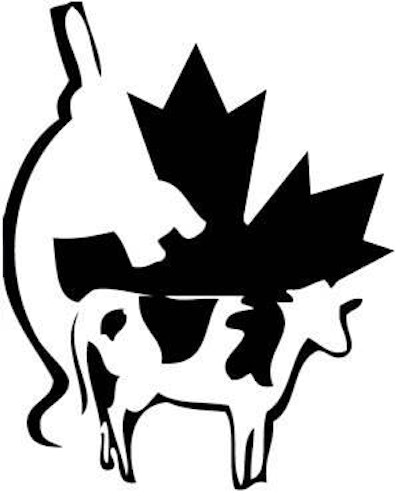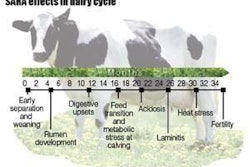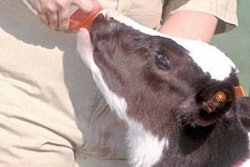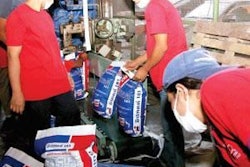
The trend towards larger, more intensive dairy operations continues, although smaller, more traditional operations are showing remarkable resilience, especially in the Northeast. However, both large and small are making use of a wider range of commodity feedstuffs, whether for total-mixed-rations or other applications.
The Dairy Research and Technology Centre at the University of Alberta has compiled a useful overview of the most common commodity feedstuffs available as protein sources for dairy cattle. Lorraine Doepel, with the University's Department of Agricultural, Food and Nutritional Science, notes that the protein needs of dairy cows can be met from a variety of sources but that their selection requires balancing relative advantages in cost, availability, nutrient composition and variability, protein degradability, palatability, presence of undesirable substances, and storage and handling characteristics.
There is increasing attention to the quality of vegetable protein sources, typically comparing sources against soybean meal. Doepel notes that soybean meal, typically available in 44% and 48% crude protein, depending on the level of hulls remaining after processing, can be used as the sole source of protein in dairy rations provided that the requirement for rumen bypass protein has been met. Other vegetable protein sources for dairy cattle include a range of corn co-products and other feedstuffs:
Distillers dried grains with solubles (DDGS) are now widely available as a result of the growth of the fuel ethanol industry. In a recent FEED MANAGEMENT article, Dr Jerry Shurson of the University of Minnesota noted that new ethanol plants are increasingly efficient at extracting energy from corn, so that their co-product DDGS now has higher crude protein content and lower energy content. "While typical ethanol-DDGS remains attractive for pigs and poultry," Dr Shurson wrote, "a closer look at high-protein DDGS, glutenol, and CPC... suggests these ingredients may be more useful in ruminant diets." He concluded that, "Based on our assumptions for energy value, the high-protein DDGS, CPC, and glutenol co-products have much higher value for ruminants because of the higher levels of nitrogen as CP and lower levels of fat and phosphorus."
Distillers grains, dried or wetcorn, rye, and wheat distillers grains are co-products of the alcohol distilling industry. Dried distillers offer higher rumen bypass protein than the wet distillers, and, Doepel notes, works well in conjunction with soybean meal or canola meal in early lactation dairy cow diets. She adds caution that golden colored distillers grains indicate proper processing, whereas a dark color indicates overheating during processing, and this results in an increase in bound or indigestible protein.
Corn gluten meal (CGM) is a co-product of the corn wet-milling industry which produces starch and oil for human use. CGM, consisting of the dried residue from corn after the removal of the majority of the starch and germ and the separation of the bran, is available in 40% and 60% crude protein. The CGM 40% is a mixture of corn gluten feed, which consists of fiber and germ, and 60% corn gluten meal. CGM is an excellent source of rumen bypass protein (60%), Doepel notes, but is very low in lysine and tryptophan and therefore, in dairy rations, must be blended with a high quality protein such as soybean meal.
Wet brewer grains, a co-product of the brewing industry, typically contain 70-80% water and, Doepel warns, are very susceptible to spoilage. However, it is a good source of rumen bypass protein and contains significant energy. In silage-based rations, she cautions that use of brewers grains should be limited and that spoilage of the feedstuff can cause poor milk production and reduced fertility.
Peas, Doepel reports, have a protein content averaging nearly 24%, but the quality as a source of rumen undegradable protein is low relative to other supplemental protein sources. She adds, "In highly productive dairy cows, peas may not provide adequate amounts of bypass protein, thus necessitating supplementation of the diet with high bypass protein sources." Nonetheless, peas are palatable to dairy cattle and do not require processing prior to feeding. Moreover, she notes that there does not appear to be an upper limit on the amount of peas that can be included in rations, provided that they are balanced for bypass protein.

















